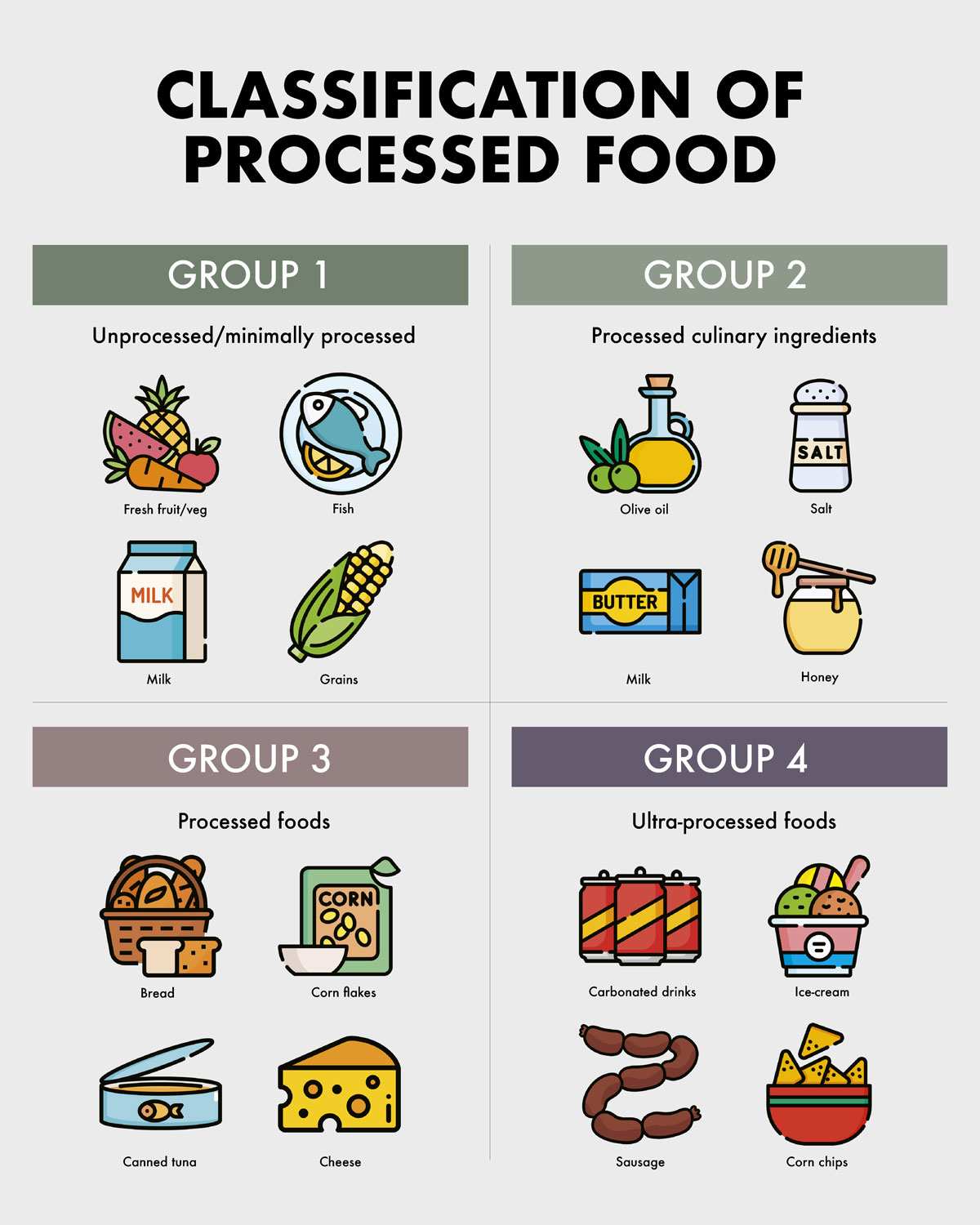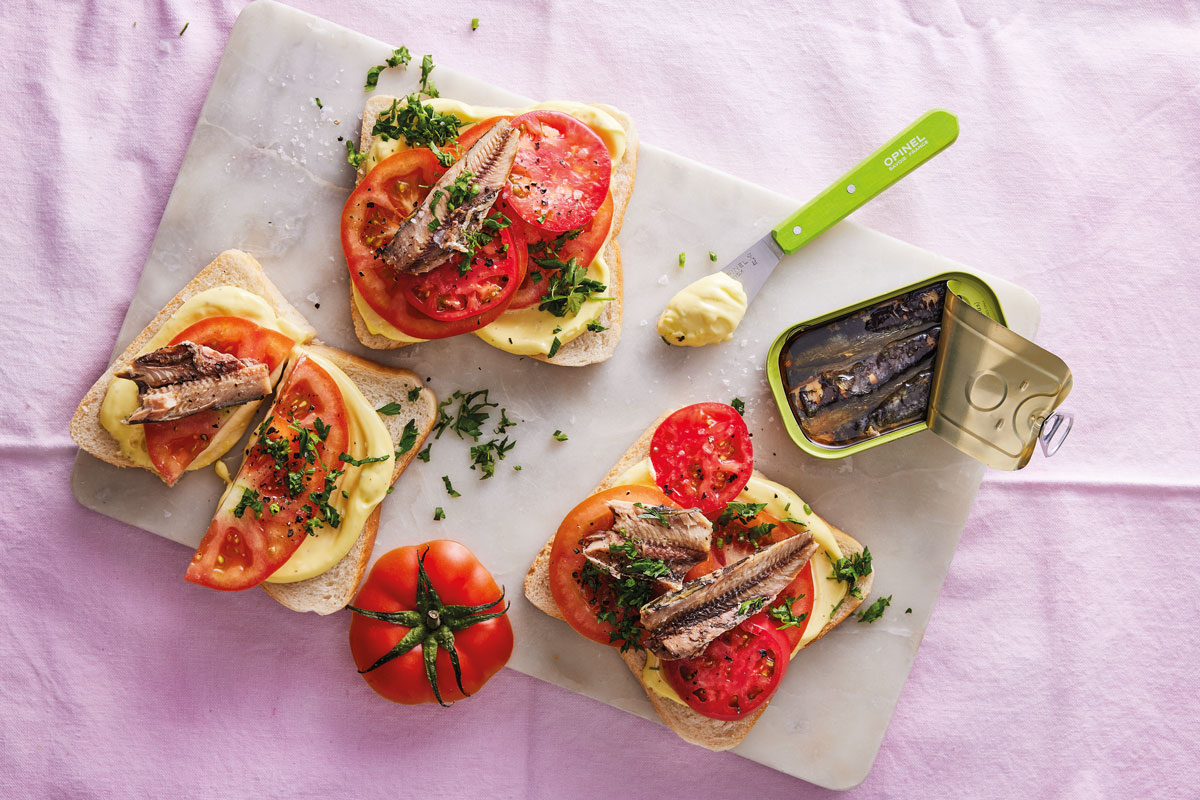The lowdown on processed food: here’s what you need to know
Should you avoid “ultra-processed” foods at all costs? Are they always bad for your health? We asked the experts what you should know about the impact of processed foods in your diet.
Why process in the first place?
In the 2023 book Ultra-Processed People, scientist and journalist Chris van Tulleken raises the alarm about foods manipulated to the point that they no longer resemble any raw ingredients – and, he says, designed to be addictive to their consumers. But it’s useful to remember that food processing didn’t begin with manufacturers’ efforts to make foods sweeter, brighter-coloured and more desirable than those of their competitors. Food processing has enabled the world’s increasingly varied, more nutritious menu over the past few hundred years by increasing shelf life – preventing food waste and enabling consumption of nutrient-dense foods all year round where this wouldn’t previously have been possible.
Canned vegetables are not the extent of it, of course: processed food has come a long way. Today it’s possible to buy foods that are enriched with vitamins and nutrients that can make them a beneficial choice. But “hyper-palatable” foods are also a reality: ultra-processed items loaded with ingredients that make them our first choice when we’re craving something sweet, salty, and moreish. And emerging research links increasing consumption of ultra-processed foods to a greater risk of long-term health conditions like cardiovascular disease, cancer and diabetes.
Not all processed foods are created equal
Once you discover that any fruit or vegetable that’s been prepared for consumption in any way can be considered “processed” – even if it’s just been washed, or chopped in half – it becomes clear that the blanket term “processed foods” isn’t particularly useful.
The NOVA Food Classification system was created to sort foods into categories according to how extensively they’ve been altered. According to this system, a mielie just out of the ground with its husk still intact is not processed; washed and packaged corn is minimally processed; canned whole sweetcorn is processed; and factory-made flavoured popcorn is ultra-processed.

The nuance shouldn’t stop there: to understand which foods are of concern to those raising the alarm about ultra-processed foods, and why, it’s useful to look at nutrition more holistically. The NOVA scale is based on the work of Dr. Carlos Monteiro, a professor of Nutrition and Public Health. A 2009 piece by Monteiro in the journal Public Health Nutrition is often cited by those interested in the values, and lack thereof, of processed foods. In it, he makes strong statements such as, “Diets that include a lot of ultra-processed foods are intrinsically nutritionally unbalanced and intrinsically harmful to health.”
But how? It’s true that some processed foods contain nutrients of concern such as salt or saturated fats, or harmful amounts of such nutrients that would be unproblematic in smaller amounts, but this is not what places a food in the ultra-processed category. Critically, the NOVA system doesn’t take nutritional value into account, so it can’t be used as a tool to determine whether a food is “healthy” or not. A minimally processed food is not necessarily nutritious, an ultra-processed food might contain significant amounts of crucial nutrients, and a host of additional factors should be considered when making beneficial food choices. For example, an ultra-processed breakfast cereal that is wholegrain and low in sugar, with added vitamins and minerals, would be a better choice than homemade white bread with butter and homemade jam – because the latter would offer much less nutritional value, no fibre, and high levels of sugar and saturated fat.
Forget forbidden food
Habits and lifestyle are closely linked to the way we eat. According to Cindy Chin, nutrition manager at Woolworths and registered dietitian, there’s little to be gained by classing food items or types as “bad”, because this creates the concept of “forbidden foods” – all the more tempting, and potentially even a catalyst for disordered eating patterns. Chin suggests ensuring, instead, that the bulk of any diet consists of foods that fulfil your nutritional needs. Meeting these needs gives you a good chance of curbing your body’s cravings for the intense tastes of ultra-processed foods – an option far preferable to longing for foods that you’ve placed off-limits.

Ultra-processed foods might be fun for a moment, but they take a lot of the communal, cultural value out of eating. Even if what’s left isn’t physically harmful, it’s no match for a good meal with family and friends. Van Tulleken suggests, and Chin agrees, that “the best dietary advice is to base diets on fresh and minimally processed foods, and on dishes and meals made up from such foods with the addition of refined ingredients extracted from whole foods.” For many of us, efforts at healthy eating involve a lot of elimination, so the use of the word “addition” here is key.
You are what – and where, and when, and why – you eat
In short, the problem with processed foods isn’t that they exist, and the solution to health concerns isn’t to eliminate them, but to minimise these foods in your diet. Food is meant to bring joy, pleasure and satisfaction along with nutrition, so a holistic approach is needed: sometimes, enjoyment can come in a bright, sweet package, while other days, the most delightful meal is a nutritious one, prepared slowly, and eaten in good company.
ALSO READ: 4 ways to think out of the bin when it comes to food waste



Comments